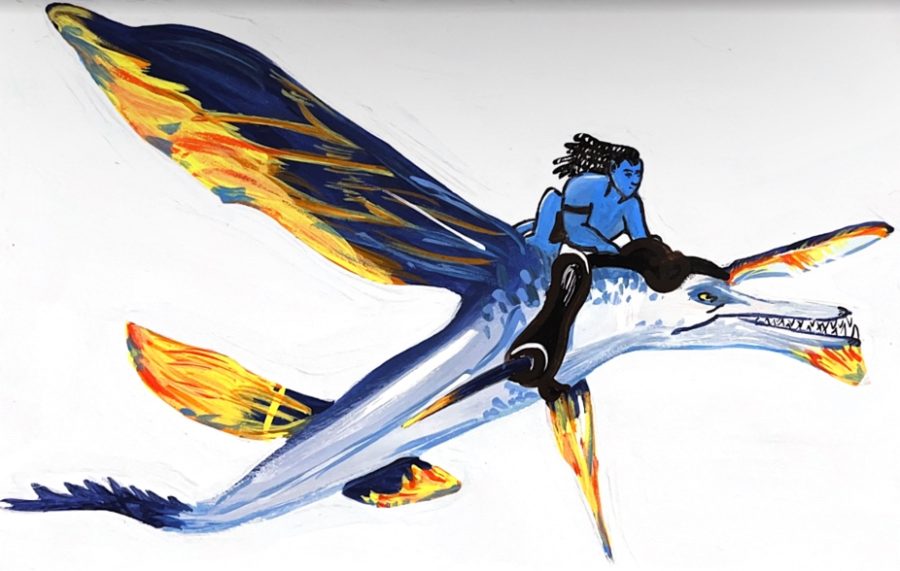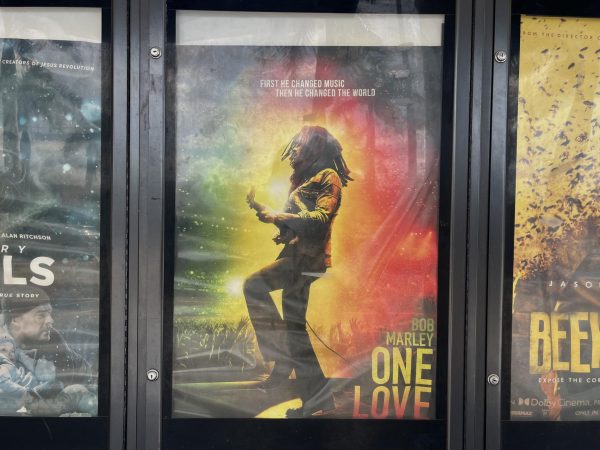Review: “Avatar: The Way of Water”
A sequel of one of the highest grossing films of all time, “Avatar: The Way of Water,” is a beautiful continuation of an already amazing trilogy, once again bringing us back to the stunning planet of Pandora and its diverse inhabitants as they continue to wrestle against corrupt human forces intent on colonizing their lands and destroying their way of life.
Released 13 years after the original film, the sequel reintroduces the Na’vi people, who after years of peace are once again facing the threat of colonization from the human race. When past enemies resurface, the Sully family, in an attempt to shield their people and each other, take refuge with the Metkayina, a clan of Na’vi adapted to the sea.
As they struggle to adapt to their new environment, with the human threat looming in the distance, the Sully’s learn the ways of the oceanic tribe while trying to protect their family and their planet from those willing to destroy them, no matter the cost.
Truly a story of love, loss and rebirth, the film sets up the remaining sequels in a remarkable way, preparing both old and new audiences for the rest of the Avatar film franchise.
“The story was easily one of the best and easiest to understand of most films I’ve watched like it. The visuals and world building of the movie made it worth the few hours needed to watch it,” Jack Molback, junior, said.
Like many others who have seen the newest feature, Molback was captivated by the stunning effects used throughout the course of the film, crediting them to the utilization of newer machinery and technologies.
“The eye-catching visuals of every second of the movie is obviously the work of recent advancements in editing and 3D software,” Molback said. “I believe that the love put into the film by the people who made it effectively shows the impressive possibilities of modern technology.”
Through this technological growth, James Cameron, renowned filmmaker and director of the franchise, was further able to expand the fictional world he created through introducing his audiences to other Na’vi tribes such as the Metkayina.
“The film portrayed Pandora from the perspective of the aquatic Avatars,” Juliet Baltrun, junior, said. “This was a clever continuation of the original Avatar movie, where the Avatars were land people.”
While the latest installment broadened the world of Pandora for viewers, and will seemingly continue to do so in the future by introducing more distinct clans, some were disappointed in the lack of diversity regarding the film’s storyline.
“It expanded the scope of the world while further flushing out existing characters,” Brennan Milliard, senior, said. “Unfortunately, the plot is extremely similar to the first film and does little to add any sort of complexity.”
For Milliard, the strongest aspect of the movie was the relationships that they were able to build between the characters, specifically the Sully family.
“I think that the emotional core of the movie lies within the relatable family dynamic the main characters possess. The relationships feel real and are easily comprehensible for the average audience,” Milliard said.
While these familial bonds between the main characters were important in furthering the film’s main plot, just like the original feature of the Na’vi people’s connection to each other, to their planet and to Eywa, their god and the embodiment of Mother nature, are what truly give the story a moving meaning.
The Na’vi are symbolic of Native tribes from our past who succumbed to the taking of their land and the colonization of their territories. And yet, unlike those tribes, the clans of Pandora’s connection to their planet and to one another drive them to take action against opposing forces despite their different ways of life, uniting them to achieve a common purpose of preservation.
“The film showed that two forces coming together despite their differences can defeat evil,” Baltrun said.
On the whole, “Avatar: The Way of Water,” was a visually extraordinary movie that emphasized a need for unity and sticking together. While there were some ways in which the plot could be improved, I am filled with anticipation for future films and can’t wait to see what lies ahead for the Na’vi people.











